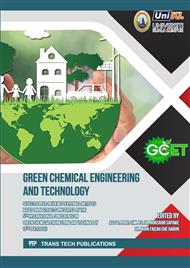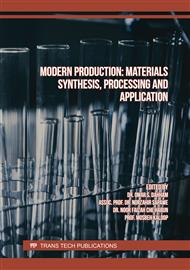p.131
p.145
p.153
p.165
p.175
p.183
p.193
p.203
p.211
Optimization of the Microwave Assisted Extraction of Anthocyanin from Violet Glutinous Rice (Oryza sativa) and its Antioxidant Activities
Abstract:
The application of natural pigments like anthocyanin carries substantial implications in various industries due to their health benefits, including antioxidant abilities, limiting resistance reduction and anti-inflammatory activities. This study extracted anthocyanin from violet glutinous rice (VGC) by microwave-assisted extraction (MAE). The process was optimized concerning different extracting parameters such as solvent concentration (H2O, Ethanol 50, 60, and 70%), material-to-solvent ratio (1/5, 1/10, 1/15, 1/20), microwave power (100, 200, 300W) and microwave support time (3, 5, 7, 10 min). Moreover, the antioxidant property of the obtained anthocyanin was investigated using the DPPH (2.2-diphenylpicrylhydrazyl) and ABTS (2,2-azinobis [3-ethylbenzothiazoline- 6-sulphonic acid]) assays. The highest anthocyanin content, 1.572 mg/g, was achieved at the following conditions: 50% ethanol, the solid/liquid ratio (1:10 mL/g), extraction time (5 min), and microwave power (100W). The antioxidant activity of the ethanol extract of violet glutinous rice with values IC50 was achieved at 93.18 µg/ml, and 32.66 µg/ml for DPPH and ABTS scavenging activity, respectively.
Info:
Periodical:
Pages:
175-181
Citation:
Online since:
December 2022
Authors:
Price:
Сopyright:
© 2022 Trans Tech Publications Ltd. All Rights Reserved
Share:
Citation:



